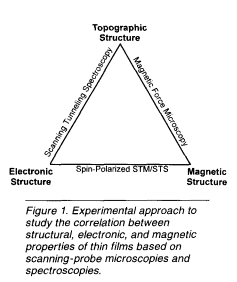Article contents
Electrochemistry of Conjugated Polymers and Electrochemical Applications
Published online by Cambridge University Press: 29 November 2013
Extract
The discovery in 1977–78 that trans-polyacetylene — (CH)x, the prototype conducting polymer (Figure 1)—could be chemically p-doped (partly oxidized) or n-doped (partly reduced) with a concomitant increase of its conductivity through the semiconducting to the metallic regime introduced new concepts of considerable theoretical and possible technological importance to condensed matter science. In 1979 it was discovered that p- or n-doping of trans-(CH)x could be accomplished electrochemically and that these processes were electrochemically reversible. Polyacetylene is the simplest example of a conjugated polymer, a polymer in which the “backbone” atoms are joined alternately by single and double bonds. All conducting polymers, “synthetic metals,” are conjugated polymers, at least in their doped forms. Other conducting polymers, including for example, poly(paraphenylene), polypyrrole, polythiophene, and polyaniline, have since been examined as electrochemically active materials. These findings have stimulated much industrial and academic interest in the electro-chemistry of conducting polymers and their possible technological applications in for example, energy storage, electrochromic displays, electrochemical drug-delivery systems, electromechanical devices, and light-emitting devices.
This article will show the relationship between the doping of a conjugated polymer, the reduction potential of the polymer, and the role of “dopant” ions. These interrelationships have frequently caused considerable confusion in understanding electrochemical doping. Electrochemical synthesis of conjugated polymers and the role of cyclic voltammetry in elucidating the mechanism of electrochemical redox processes involving conjugated organic polymers will also be discussed. This article will also summarize a few selected applications involving electro-chemical properties of conjugated polymers. The coverage is intended to be

exemplary rather than exhaustive. Furthermore since the electrochemistry of (CH), the “prototype” conducting polymer, has been extensively studied and comprises a relatively simple, reversible electrochemical system, it will be used to exemplify the basic concepts involved. These basic concepts can then be applied with appropriate modification as necessary to the electrochemistry of other conjugated polymers. Polyaniline will then be used to illustrate a more complex conjugated polymer electrochemical system.
- Type
- Polymeric and Organic Electronic Materials and Applications
- Information
- Copyright
- Copyright © Materials Research Society 1997
References
- 20
- Cited by


